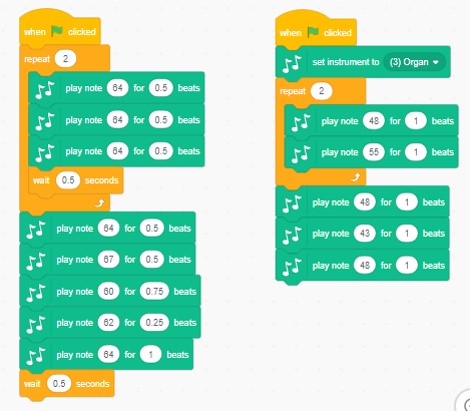Black Lives Matter and schools’ equality duties
"The ultimate measure of a [person] is not where [they] stand in moments of comfort and convenience, but where[they] stand at times of challenge and controversy."
Martin Luther King, Jr.
Right minded people across the world have been profoundly shaken by the killing of George Floyd. The recording of the actual live event has hit hard through our screens, right into our own front rooms, bedrooms and kitchens. Schools of course have responsibilities under the Equality Act 2010 to recognise the impact of such events on pupils, students and their families, and to provide support to those most deeply affected by the initiating event and the subsequent widespread protests. Our Black, Asian and Minority Ethnic (BAME) communities in particular will be severely impacted by all of this. They may feel variously mobilised, fearful, deemed second-class, shocked, hated, disrespected, abused, and on and on. All these responses and more are inevitable. They want and need to know that schools and local authorities, along with all right minded people, understand the importance of events and the outrage they feel.
Racist acts of hatred and violence toward Black, Asian and Minority Ethnic (BAME) people continue in countries across the world, including here in Britain. This most public murder of George Floyd in the USA has led to world-wide condemnation and protest for good reason. British law is unequivocal about the priority that we hold for eradicating prejudice and inequality, so we should not be surprised that British newsreaders did not hesitate to use terms such as ‘outrage’, ‘shameful’ and ‘murder’ so immediately when reporting on the killing. Under the Equality Act 2010, it is the duty of all schools and local authorities to recognise pupils’ need for support (individualised where needed) and to provide education to help all pupils to interpret the meaning of what they have seen, felt and experienced. We need to be seen in solidarity with pupils with ‘protected characteristics’ when they feel this vulnerable, this angry and this exposed.
Our position in school must be that we hold prejudice and discrimination as unacceptable and that every single one of us (adult and pupil) has a role in this. The school equality policy has meaning only if we make it responsive to real events. We want our young people to be active and caring citizens who are willing to challenge what they see as wrong, lacking or prejudicial in their own relationships and in society as a whole. We should help pupils to develop an understanding of the complexity of events that is based on full and correct information, an understanding of the law and an insight into the experience and feelings of others. What can schools and teachers do?
What can schools and teachers do?
1. The school equality policy into practice
Revisit the school’s equality statement or policy. What does it say? Does it say enough? Is it clear that the school has expectations of everyone to be active in ensuring a school environment free of racism and other areas of prejudice, and a system active in improving outcomes for BAME people in every aspect of school life, from recruitment to exclusion. Consider how to ensure that the whole school community recognises your active commitment to ‘living’ the policy. Decide if meets the needs of the current situation and if it sufficiently supports staff to manage classroom responses to major events.
2. Curriculum review
Revisit the curriculum. Does the school teach pupils enough to develop their own age appropriate opinions on racism, race relations and prejudice? It is relevant to so many curriculum areas, for example:
- PSHE/Citizenship – human rights and equal human worth as well as the equality laws; what slavery looks like in the modern world; evidence of racism in our society today
- English – Black voices on their experience of inequality in novels, poems, interviews and newspapers;
- History – the impact of colonialism in exploiting countries around the world and the rise of the slave trade, its impact on African communities and how it benefited colonisers, the journey to outlaw slavery in Britain;
- Geography – the ongoing legacy of British colonial exploitation around the world; demographics demonstrating our diminishing relevance in the world
- Relationships Education – equality law, the right to peaceful protest, democratic response at times of crisis, inequality in Britain today, resilience and active citizenship.
In particular, the new mandatory RSHE policy also requires every school from September 2020 to
- be flexible in adapting the curriculum to meet the needs of pupils
- ensure that pupils understand the law
- represent and teach about diversity and equality
- develop pupils’ critical thinking skills
3. Personal and emotional support during distance learning
It is important that all teachers are prepared to respond to the increased vulnerability and/or outrage that is being felt, particularly by members of the BAME communities. (Don’t assume that other students will not have been deeply affected too.) Teachers should raise the issue with pupils who are not physically present in school and give them the opportunity to talk about their feelings and experiences in connection with recent events. The conversation could also explore the resilience skills they are using to manage under this added pressure, distress and disturbance.
If they need further support this should be signposted. Students can also be signposted to websites such as Every Mind Matters and Health for Teens (both run by the NHS), as well as encouraged to look at a range of reliable and factual resources to help them make sense of the context that has led to these events.(see below)
4. Induction activity post-Covid
When school resumes, teachers will of course provide opportunities for pupils to reflect on the feelings and experiences they have had to manage through the lockdown period. Perhaps allowing them to write them down anonymously might encourage them not to be fearful or self-conscious about what they write. The collected papers could be grouped and explored in one or several class discussion/s and pupils wanting or needing it should be enabled to access further support, whether in or out of school. If the Black Lives Matter movement does not come up at all through such a process, teachers might express surprise about that, which could then lead into wider discussion of how shocking and significant the collective events have been across the world, including in Britain.
It is important that current events are understood in the context of the history that has brought us to this point and the data that shows how the reverberations continue today as a result of that history. Pupils do need to develop a recognition that British colonial history was complicit in establishing racist attitudes and divides that have left a legacy that still impacts today. In this context they will better understand why people might find deeply offensive the celebration of historical figures that were inherently part of systemic slavery and exploitation of Black peoples over centuries. This also needs an underpinning of the law in the past, the law in the present and the political and legal systems by which change should be able to be brought about.
At the time of writing, Google maps shows the location of the Edward Colston statue as being in the River Avon. There is a long and detailed history in Bristol of public disquiet about this statue of a man whose wealth was gained at the expense of kidnapped, enslaved, murdered and abused Africans. There is much other evidence of the public celebration of Colston’s life in the city, such as in the naming of a major concert venue and a school. Local political processes failed repeatedly to find a way forward in the face of the growing protest evidenced around the statue constantly. This has been the experience of just one city. Since these developments the protests in other cities are also finding a stronger voice. Peaceful and lawful protest within the law is an important part of our democratic right of expression and our young people should understand that.
Many schools teach about the civil rights movement in the USA, whilst overlooking parallels in this country, such as the Bristol bus boycott in 1963*. The British experience of racism and prejudice was different from that in the USA, but racism exists in our country and we must continue to be open to learning how it manifests itself and be ready to take action. Do our primary and secondary schools still revisit the life of Stephen Lawrence and explore how much had to be learned by mainstream institutions about their contribution to his attack, his death on the street and the failure to prosecute his killers? I hope so. The learning made changes to the law. Did we talk with pupils about the Windrush scandal and revisit that history? It isn’t too late.
The ending of systemic racism in our society and in our institutions begins with knowledge and understanding of the past and the present. It requires empathy and a recognition of our shared humanity and personal responsibility. It takes ‘courageous advocacy’ to stand up for fairness and equality and it is our responsibility as educators to skill our young people to be able to recognise where there is a wrong and to stand up and be counted through lawful and safe means. To build a better society, each and every one of us in schools must be open to working on ourselves. In Michelle Obama’s words, “It starts with self-examination and listening to those whose lives are different from our own.”
First they came for the Socialists, and I did not speak out— Because I was not a Socialist. Then they came for the Trade Unionists, and I did not speak out— Because I was not a Trade Unionist. Then they came for the Jews, and I did not speak out— Because I was not a Jew. Then they came for me—and there was no one left to speak for me.
Martin Niemoller



























